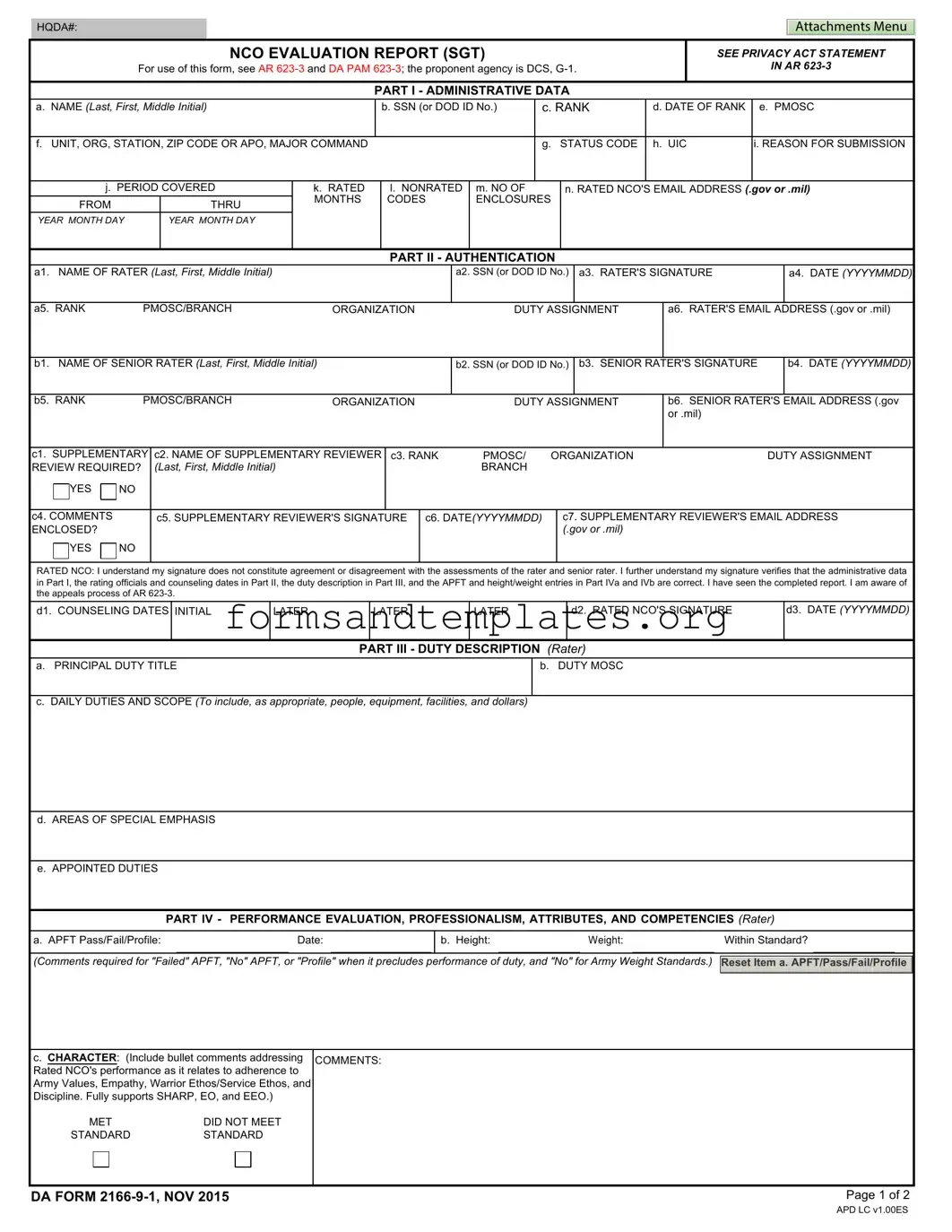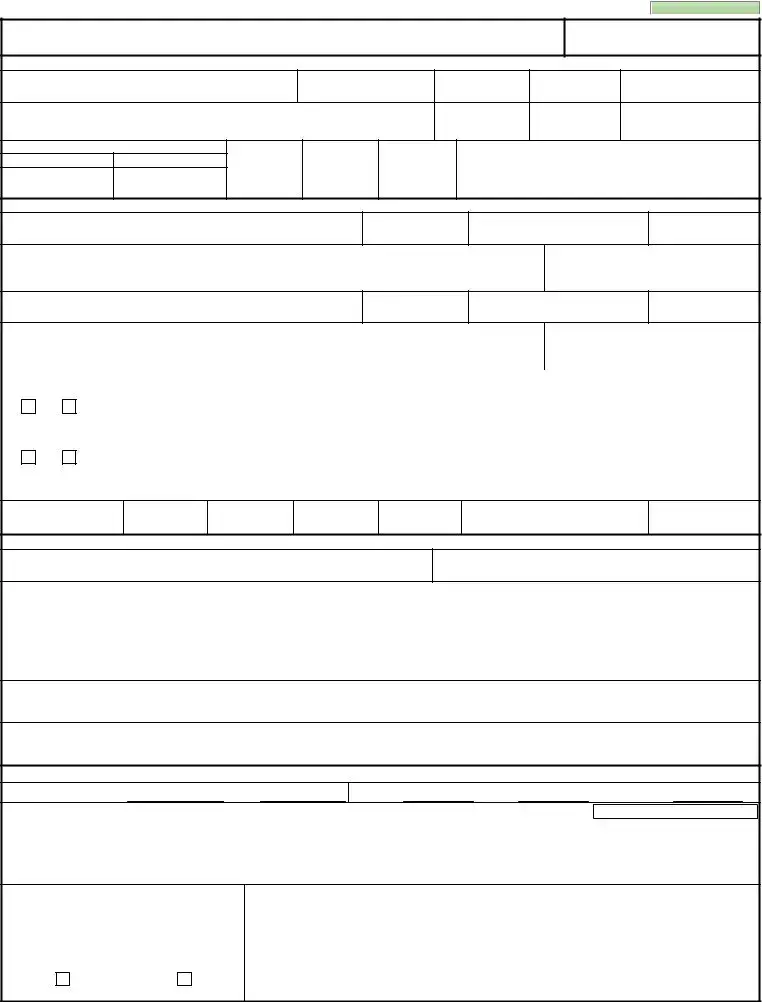The DA Form 2166-9-1, commonly known as the NCO Evaluation Report for Sergeants, plays a crucial role in the evaluation process for non-commissioned officers in the U.S. Army. This form is not merely a bureaucratic requirement; it serves as a comprehensive tool for assessing an NCO's performance, potential, and professional development over a specified period. The form includes vital administrative data, such as the NCO's name, rank, and unit, ensuring that all evaluations are accurately attributed. It also outlines the roles of the rater and senior rater, who provide their assessments and signatures, confirming the authenticity of the evaluation. Moreover, the document emphasizes the importance of a detailed duty description, which captures the NCO's responsibilities and contributions within their unit. Performance evaluation is a significant aspect of this form, encompassing various attributes such as character, presence, intellect, leadership, development, and achievement. Each of these areas is critically analyzed, with comments that reflect the NCO's adherence to Army values and overall effectiveness. Lastly, the form includes a section for the senior rater to assess the NCO's potential compared to peers, which can significantly influence future assignments and career progression. Understanding the intricacies of the DA Form 2166-9-1 is essential for both evaluators and those being evaluated, as it directly impacts career trajectories within the Army.


